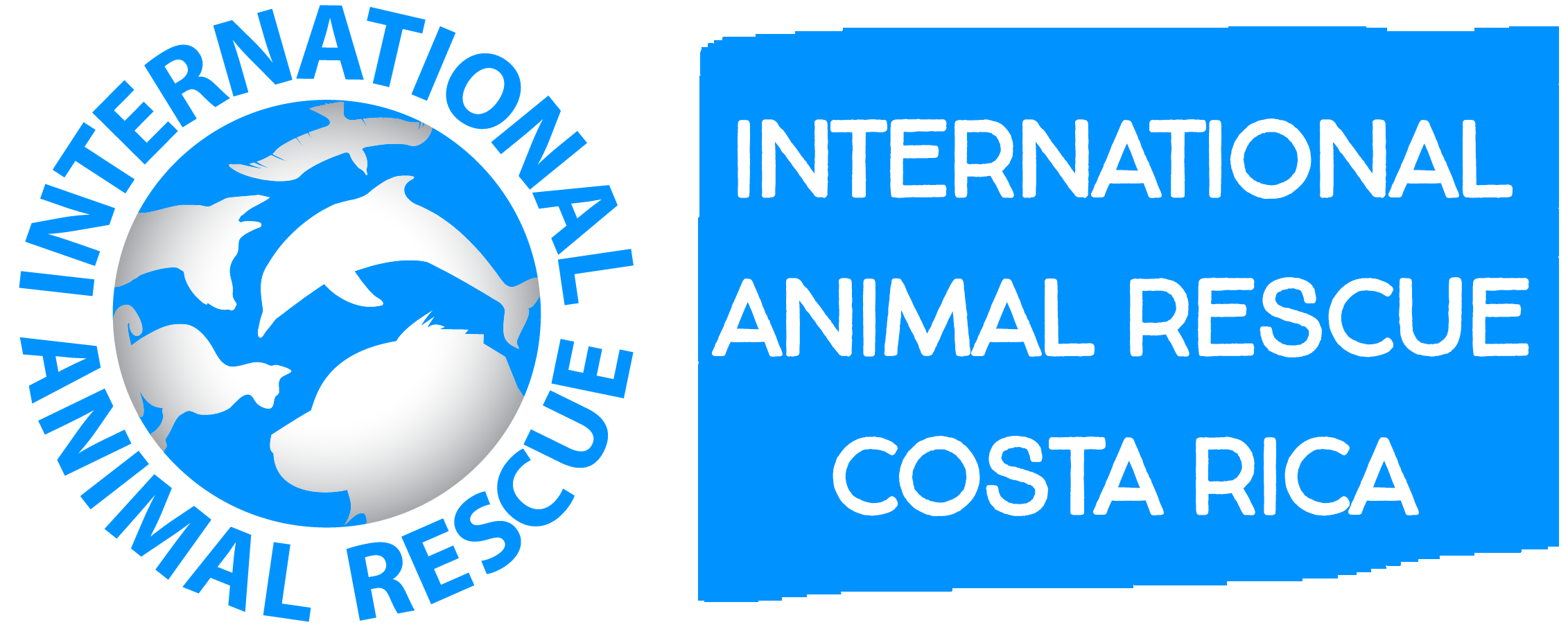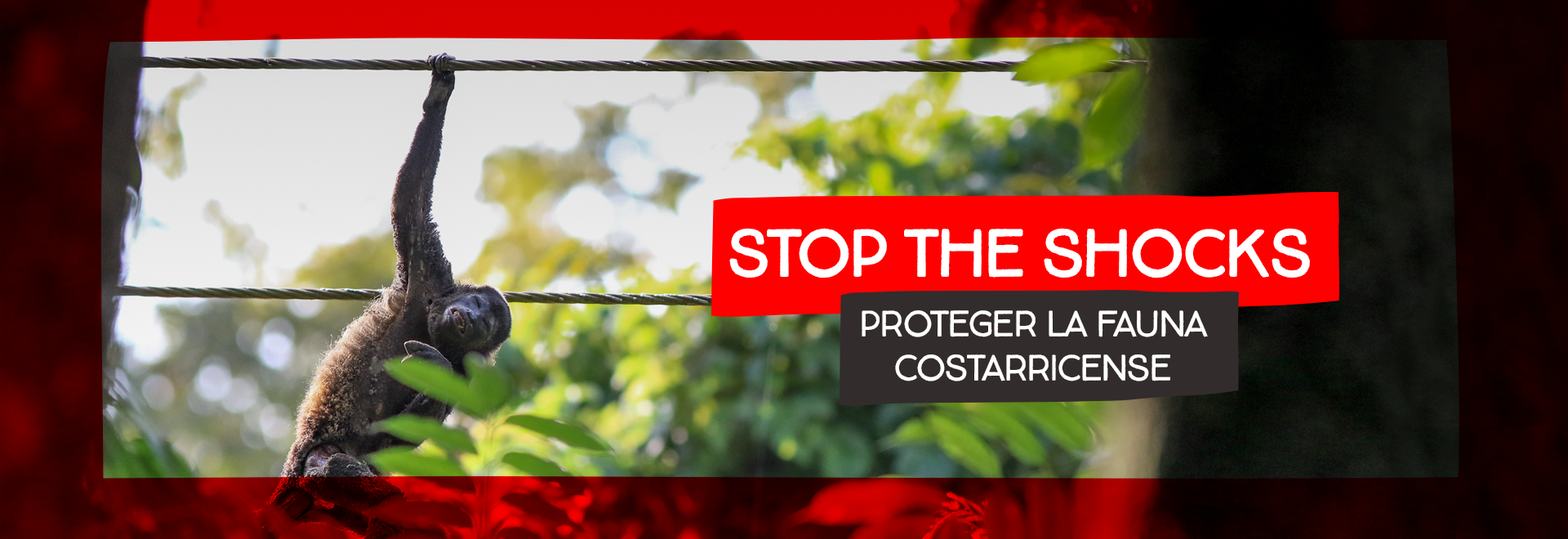
WHY ARE POWER LINES KILLING WILDLIFE?
In a country that prides itself on sustainable energy and eco-friendly practices, it might surprise you to learn that wildlife is being electrocuted.
THE STOP THE SHOCKS PROGRAM:
The Stop the Shocks (STS) program was created by the community as a preventive initiative aimed at mitigating the electrocution problem in Nosara, Costa Rica.
THE PROBLEM:

Ineffective Wildlife Protection Laws
Ineffective Wildlife Protection Laws
Despite laws intended to protect the environment, biodiversity, habitats, and wildlife, these laws are either ineffective or not properly enforced.

Uninsulated Power Distribution
Uninsulated Power Distribution
New electrical cables and transformers are still being installed without proper insulation, posing a danger to arboreal wildlife.

Habitat Destruction
Habitat Destruction
Unregulated development and deforestation force wildlife to use dangerous electrical cables to cross between fragmented habitats.

Wildlife Instincts
Wildlife Instincts
Wild animals cannot distinguish between safe, natural vines and dangerous power cables, only sensing the danger when it’s too late.
THE ULTIMATE SOLUTION: UNDERGROUND CABLING
The ultimate solution would be to bury all electrical cables underground, eliminating the risk of wildlife electrocutions altogether. Unfortunately, this is a very expensive endeavor that requires significant financial resources and infrastructure investment, making it an improbable option. Therefore, we focus on implementing preventive methods to mitigate the risk.
PREVENTING ELECTROCUTIONS
ICE refers to the Instituto Costarricense de Electricidad, which translates to the Costa Rican Institute of Electricity. It is the government-owned electricity and telecommunications service provider in Costa Rica, responsible for generating, transmitting, and distributing electricity throughout the country, including areas like Nosara.
Legally, ICE is the only entity authorized to install protective materials and wildlife bridges on or over electrical infrastructure. Therefore, IAR facilitates these initiatives by working closely with ICE and approved suppliers.
To prevent howler monkeys and other wildlife from accessing power lines, tree branches near electrical distribution lines need to be cut. This reduces the risk of wild animals reaching and coming into contact with live wires.
In areas of deforestation, rope bridges are installed to provide safe aerial pathways for arboreal wildlife to travel between habitats. Rope bridges provide safe aerial pathways for wildlife to travel between habitats, helping them avoid using power lines. These bridges must be placed strategically to ensure they create a specific path that keeps wildlife from needing to go down to the ground. This placement is crucial to prevent wildlife from encountering other dangers, such as car strikes or dog attacks, and to ensure they have a safe passage.
Installing insulated cables and wildlife protection covers for transformers helps prevent electrocutions, reducing the risk of harm if wildlife comes into contact with these structures.
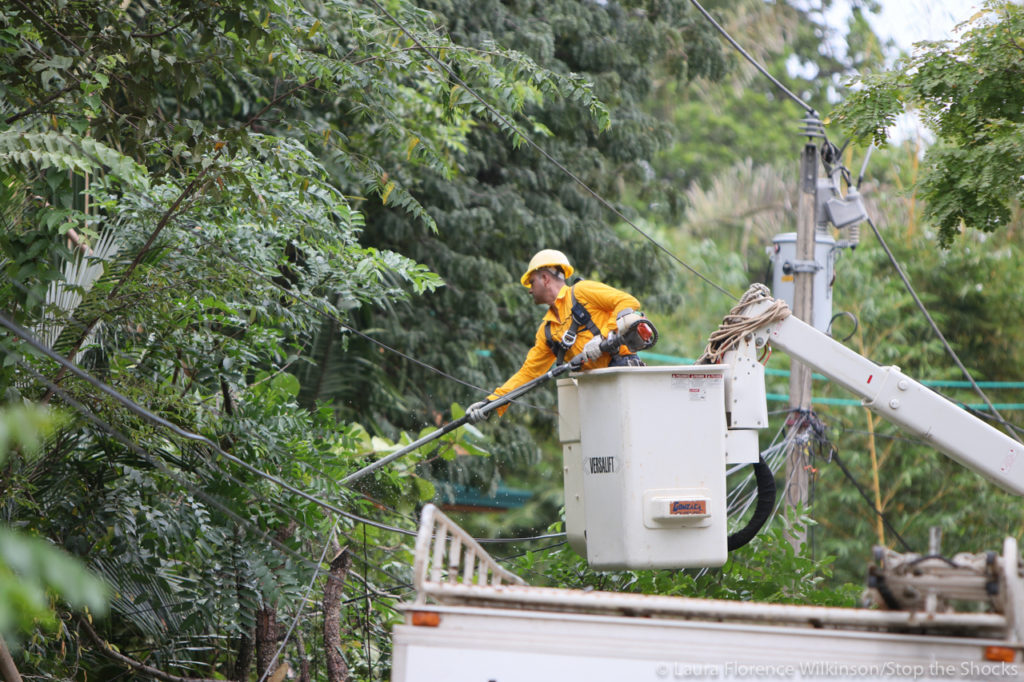
TREE TRIMMING
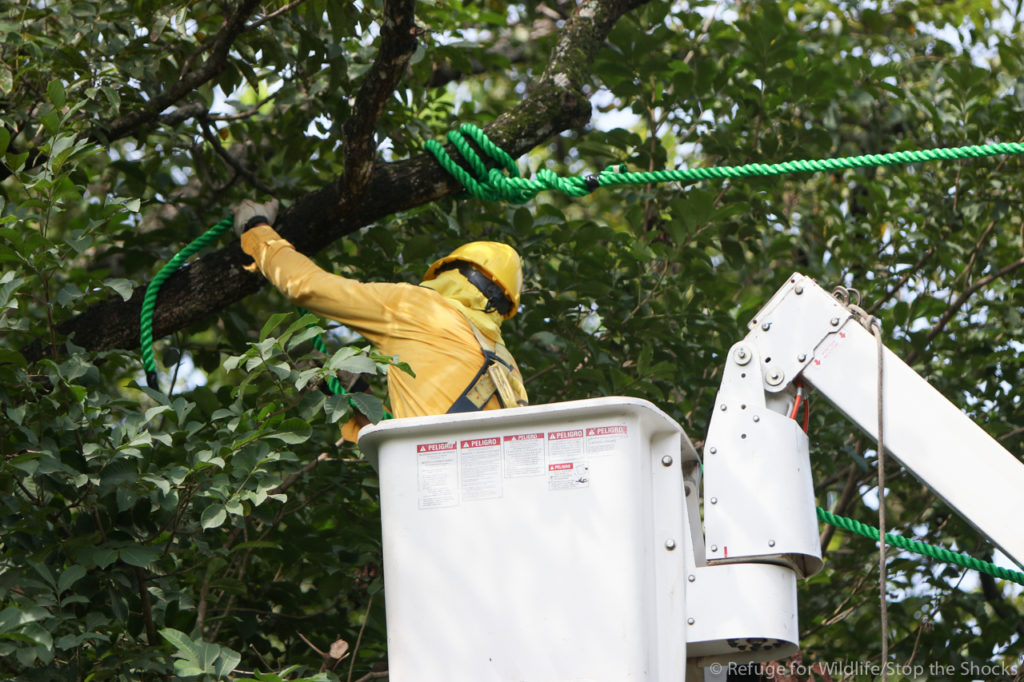
ROPE BRIDGES
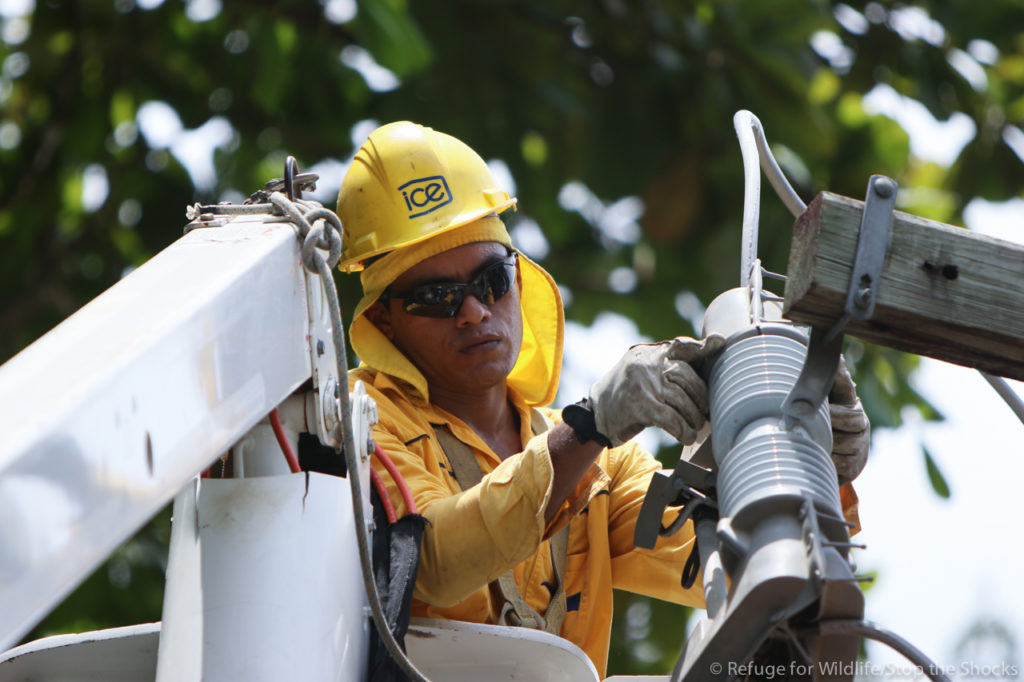
INSULATING POWER LINES AND TRANSFORMERS

HELP US COLLECT DATA
Reporting every wildlife accident is an essential part of protecting the animals of Costa Rica. With accurate information, we are able to prioritize dangerous locations and stop wildlife injuries and deaths.
The data collected is submitted to the government to lobby for change in enforcement of the wildlife protection laws.
RESCUE AND REHABILITATION OF ELECTROCUTION VICTIMS
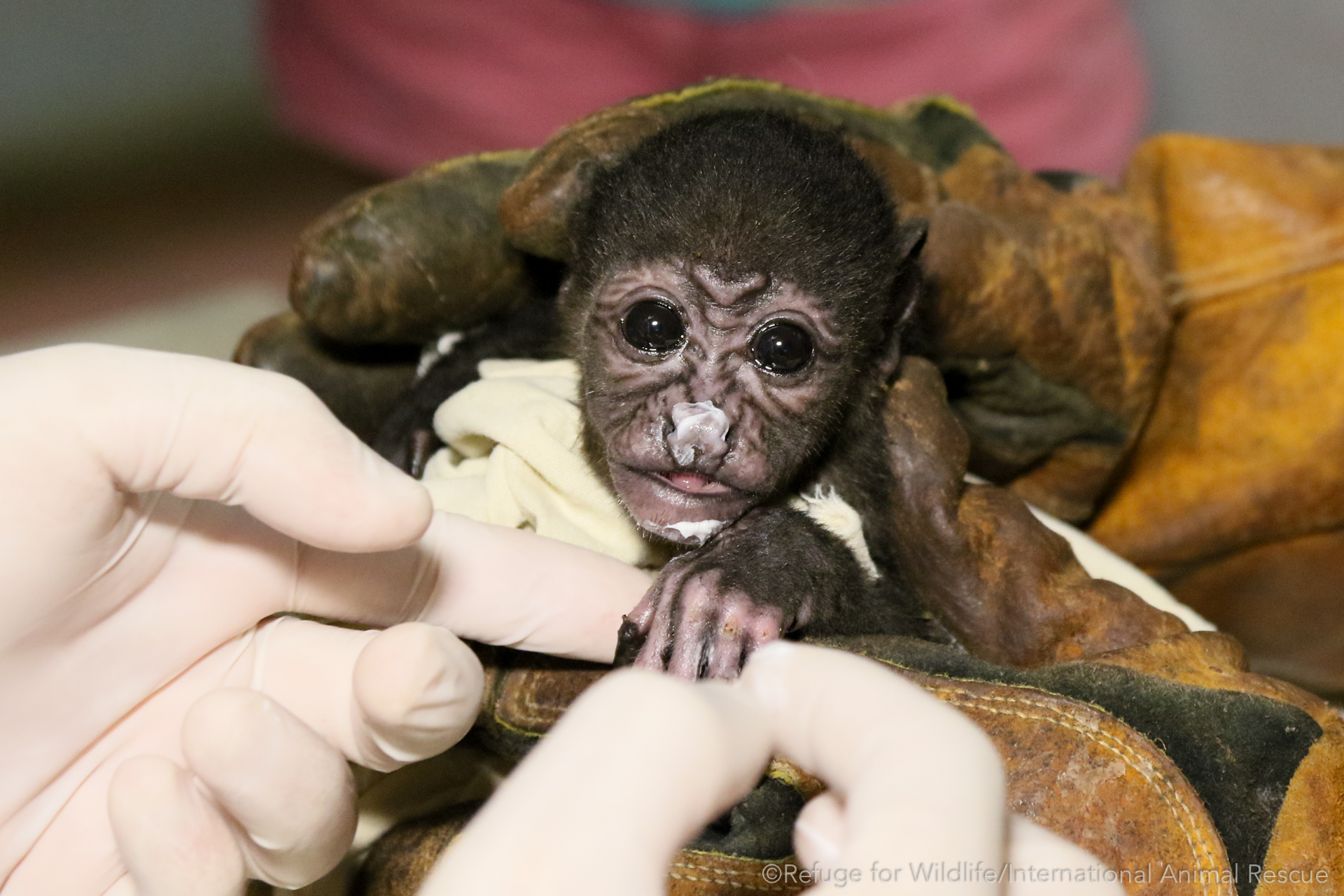
On average, IAR Costa Rica responds to over 100 electrocuted howler monkey rescue calls each year.
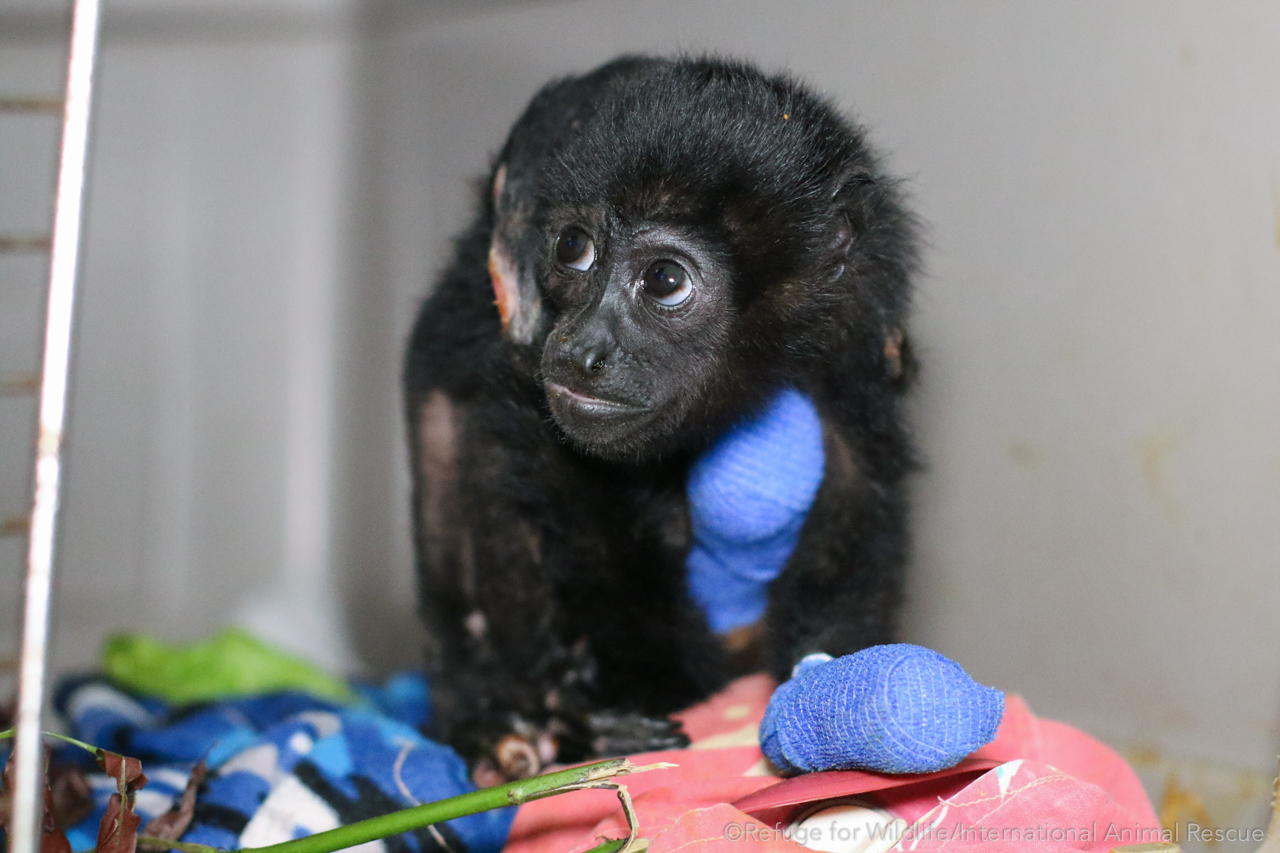
Most monkeys die at the scene due to catastrophic electrocution injuries.
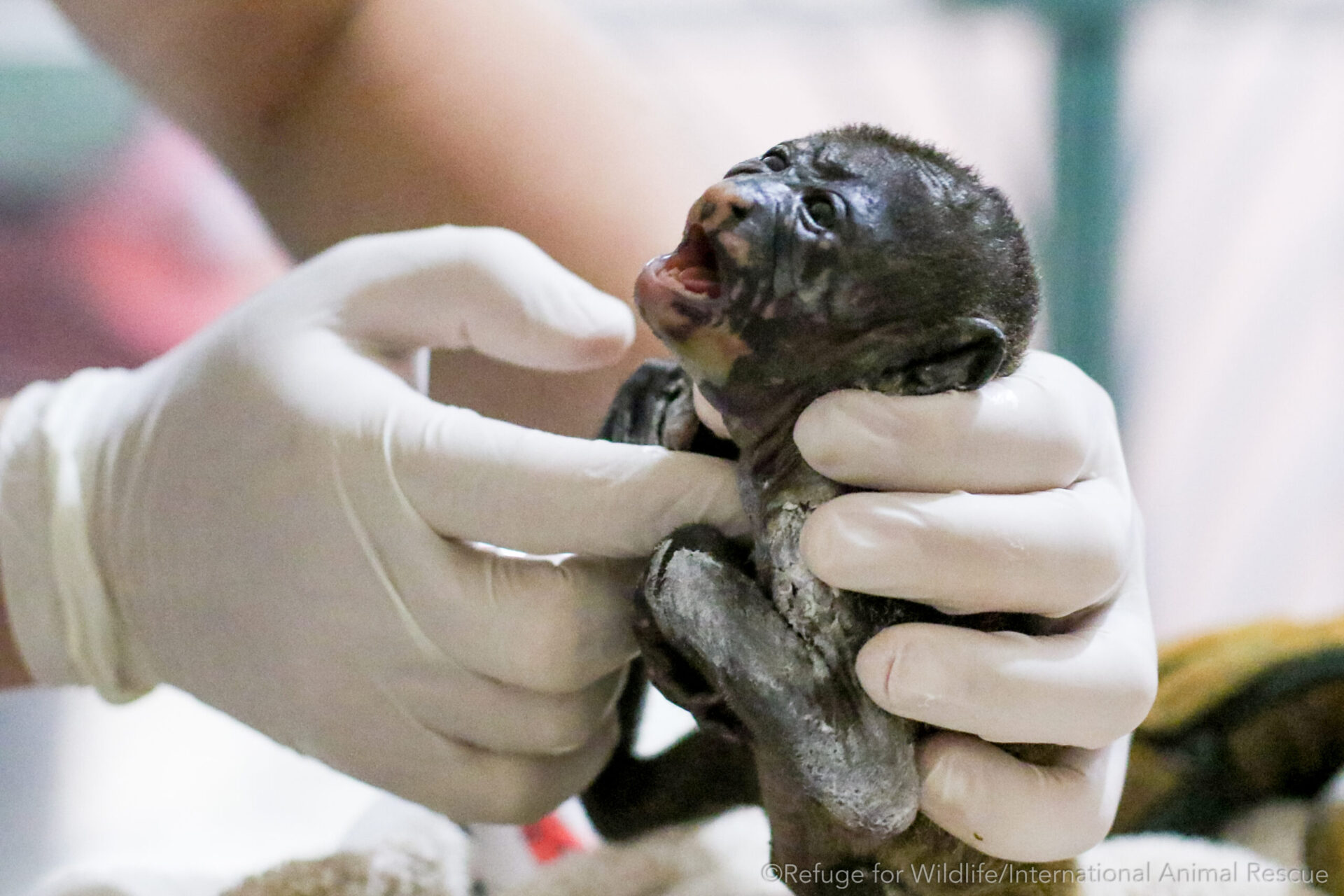
Those that survive often face severe and slow-to-manifest internal damage, with long-term damage frequently proving fatal.
GET INVOLVED:
Your support can make a difference. Donate, volunteer, or spread the word to help protect wildlife in Nosara.
CONTACT US:
For more information or to get involved, contact us at info@iarcostarica.org
Q&A:
What is Stop the Shocks (STS)?
The Stop the Shocks (STS) program was officially created as a mitigation effort to address the increased number of electrocuted howler monkeys and lack of effective response from responsible institutions.
What are the main components of the STS program?
The STS program focuses on sharing vital information with ICE (Instituto Costarricense de Electricidad) about critical hotspots based on wildlife accident statistics from our center. The three main components to mitigate the electrocution problem in Nosara, Costa Rica, are:
- Programmed Tree Trimming:
Through the data collected of electrocution hotspots, areas needed for tree trimming are
identified and communicated with ICE. ICE responds by pruning branches that are in the public
areas, which is why it is crucial for property owners to trim branches near power lines on their
private properties. This helps mitigate fire hazards, reduce wear on insulating materials due to
direct contact with branches, and prevent arboreal wildlife from accessing power lines.
- Insulating Power Lines Based on Previously Detected Hot Spots:
In collaboration with specialized ICE crews equipped with cranes, insulation materials are
installed at identified hotspots. This process follows legal stipulations, safety standards, and best
practices, often requiring the electricity to be turned off for several hours, sometimes affecting
an entire block or area.
- Rope Bridges
Critical areas are detected through a hot spot detection and analysis system to evaluate the
possibility of installing aerial bridges (or monkey bridges) for wildlife crossings in the case of
fragmented ecosystems.
Evaluating passage routes and forest cover, according to the use category of the regulatory plan,
modeling public or private areas, and monitoring troops to identify their passage routes and
habitat use, is essential to guarantee that the arboreal fauna uses the wildlife bridge that only
ICE, as stipulated by law, can install them.
Who is authorized to exercise these mitigation efforts?
Since only ICE is legally authorized to install protective materials and wildlife bridges on or over electrical infrastructure, IAR facilitates these initiatives by working closely with ICE and approved suppliers. We coordinate with ICE to schedule and ensure the safe installation of tree trimming, insulation materials, and rope bridges, in areas we have identified as "hot spots" - zones with high incidences of wildlife electrocutions.
Are the actions of STS the solution to the problem?
Unfortunately, it just minimizes wildlife accidents. These are simply mitigation and prevention efforts that we can coordinate with ICE. The ultimate solution would be to have all electrical cables underground. However, this is a very expensive endeavor that requires significant financial resources and infrastructure investment.
Why doesn't IAR put up monkey bridges independently?
Legally, only ICE is authorized to install monkey bridges and other protective materials surrounding or in proximity to electrical infrastructure in Costa Rica. As a result, IAR cannot carry out these installations independently. We work closely with ICE and approved suppliers to ensure these installations are done safely and in compliance with regulatory standards to protect wildlife.
Does the STS program receive funds?
Until 2021, the STS program received funds from the community, which were used to purchase insulating materials for the following "hot spots":
- 2010 - Installation of insulated cable throughout Guiones
- 2013 - Covered a large portion of K Section transformers
- 2016 - Covered several hotspots in Nosara: Main Road, Las Huacas, G, H, K, and L Sections
- 2017-2018 Ad-hoc insulation
- 2021 – Playa Pelada insulation of 50 transformers
What challenges did receiving funds specifically for STS pose?
IAR had no influence over the delivery times and conditions of the insulation material suppliers, or the installation schedules set by ICE. As a result, the implementation process was often delayed, making it exceedingly difficult to expedite the protection of wildlife hot spots.
Since IAR was unable to convert funds into installations within a reasonable timeframe, we decided to stop collecting funds for this project. We didn't feel it was right to pool this money without delivering results. As noted above, the funds that were collected were used to address hot spots in the following areas:
- 2010 - Installation of insulated cable throughout Guiones
- 2013 - Covered a large portion of K Section transformers
- 2016 - Covered several hotspots in Nosara: Main Road, Las Huacas, G, H, K, and L Sections
- 2017-2018 Ad-hoc insulation
- 2021 – Playa Pelada insulation of 50 transformers
Although we no longer collect funds for this project, IAR remains committed to working closely with ICE to address "hot spots" as their schedule and conditions permit.
How does installation work?
In order to install protective materials on transformers or electrical wiring, two participants are needed: the company providing the insulation material and ICE, which is the only institution legally authorized to safely install the insulation material.
The suppliers of insulation materials have their own delivery times, prices, and sales conditions. Additionally, ICE manages its own schedule for installing insulation material according to the availability of its resources.
Can IAR provide technical advice for protecting a "hot spot"?
Yes, IAR can assist in providing technical advice on the needs for protecting a "hot spot" to ensure the preservation of wildlife. Email us at info@iarcostarica.org or call us at (506) 2682-5049.
Where can I find information regarding wildlife electrocutions?
IAR is committed to maintaining and updating a database with the most complete information possible about wildlife electrocution incidents. The information that IAR obtains about electrocutions and other animal incidents entering the Rescue Center will be available through our website.
What has the STS program done in the last year?
-Road to Lagarta Villa Mango: The transformer insulation was reinforced with gray tape to eliminate the possibility of monkeys touching the openings. One of the biggest tree trimming operations was done on most of Lagarta.
-Pelada Red Lemon: The transformer insulation was reinforced with gray tape to eliminate the possibility of monkeys touching the openings. One of the biggest tree trimming operations was done on most of Pelada to prevent monkeys from reaching the primary line.
-Guiones in front of Restaurante 10 Pies and Iluminar Beach Front Suites: Tree trimming was done to prevent monkeys from touching the primary line.
-RindeMás Nosara: insulated material was installed on the three phase lines, on of the biggest hot spots of the last year.

